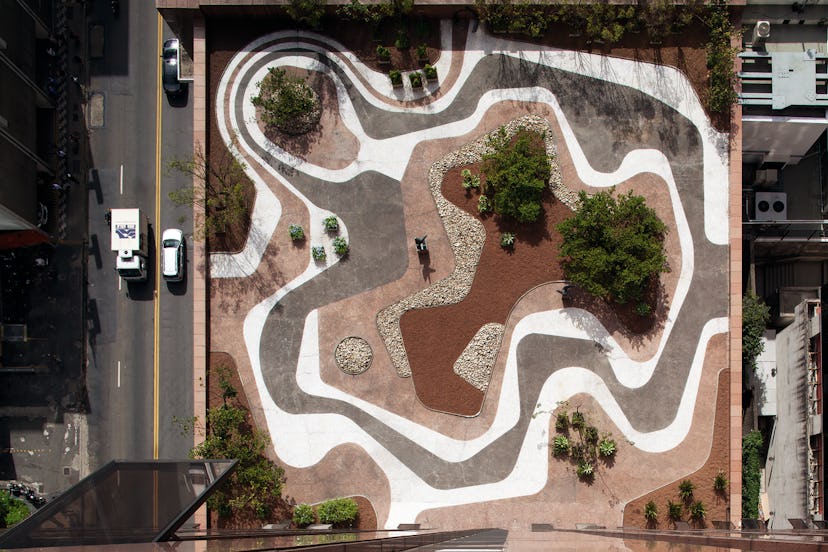Roberto Burle Marx, the Man Who Shaped Brazil

The late Roberto Burle Marx had such a passion for plants that over 50 are named after him, but unless you’re from Brazil – or Francisco Costa – the Brazilian landscape artist’s name might not ring a bell. “Roberto Burle Marx: Brazilian Modernist,” which opens this week at the Jewish Museum, will hopefully remedy that. The exhibition showcases how he shaped cities like Rio and Brasília, and while he often went traditional with azulejo tiles, Burle Marx had a serious taste for the psychedelic, too, from the swirly sidewalks of Copacabana to his cartoonish garden atop Rio’s Miniature of Education. Step through them all, here.
1
Mineral roof garden at the Banco Safra headquarters, São Paulo, 1983.
Photo © Leonardo Finotti.
2
Avenida Atlântica, Copacabana, Rio de Janeiro, 1970.
© Burle Marx Landscape Design Studio, Rio de Janeiro.
3
Victoria amazonica water lilies, garden of the Fazenda Vargem Grande, Clemente Gomes residence, Areias, designed by Roberto Burle Marx, 1979.
© Burle Marx Landscape Design Studio, Rio de Janeiro.
4
Design for the Minister’s Rooftop Garden, Ministry of Education and Health, Rio de Janeiro, 1938.
© Burle Marx Landscape Design Studio Rio de Janeiro.
5
Rooftop Garden of the Ministry of Education and Health, Rio de Janeiro, 1938.
Photo © Cesar Barreto.
6
Gardens and azulejo tile walls of the Walter Moreira Salles residence, now the Instituto Moreira Salles, 1951.
Photo © Cesar Barreto.
7
Biscayne Boulevard in Miami, 1988-2004.
© Burle Marx Landscape Design Studio, Rio de Janeiro.
8
Design for a mineral roof garden at the Banco Safra headquarters in São Paulo, 1983.
© Burle Marx Landscape Design Studio, Rio de Janeiro.
9
Cover design for the magazine Rio, 1953.
Courtesy of Sítio Roberto Burle Marx, Rio de Janeiro.
10
Roberto Burle Marx painting a tablecloth in his home loggia, decorated with his own azulejo tiles and chandelier, 1980s.
Photo © Tyba.